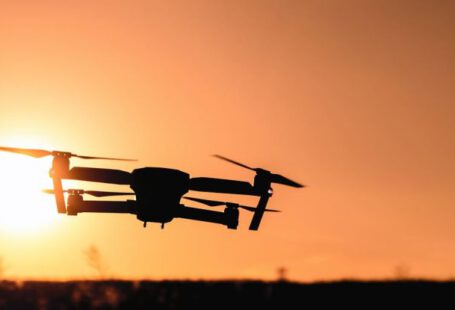Autonomous vehicles have long been a subject of fascination and innovation in the automotive industry, promising a future where cars drive themselves, reducing accidents, congestion, and emissions. The development of autonomous vehicles has seen significant breakthroughs in recent years, driven by advancements in various technologies. From sensors to artificial intelligence, these breakthroughs are paving the way for a future where self-driving cars are a common sight on our roads.
**Sensors: The Eyes and Ears of Autonomous Vehicles**
One of the key breakthroughs driving the development of autonomous vehicles is the advancement in sensor technology. Sensors act as the eyes and ears of self-driving cars, allowing them to perceive and understand their environment. Lidar, radar, cameras, and ultrasonic sensors work together to create a detailed picture of the vehicle’s surroundings, enabling it to navigate safely through traffic, detect obstacles, and make split-second decisions. The continuous improvement in sensor accuracy, range, and reliability has been crucial in making autonomous driving a reality.
**Artificial Intelligence: The Brain Behind Autonomous Vehicles**
Another pivotal breakthrough in autonomous vehicle development is the advancement of artificial intelligence (AI) algorithms. AI serves as the brain behind self-driving cars, processing the vast amount of data collected by sensors in real-time to make decisions on steering, acceleration, and braking. Machine learning algorithms enable autonomous vehicles to learn from experience and improve their driving capabilities over time. The continuous refinement of AI algorithms is essential for enhancing the safety and efficiency of autonomous vehicles.
**Connectivity: Enhancing Communication Between Vehicles**
The development of autonomous vehicles is also being propelled by advancements in connectivity technologies. Vehicle-to-vehicle (V2V) and vehicle-to-infrastructure (V2I) communication systems allow autonomous cars to exchange information with each other and with the surrounding infrastructure. This real-time data sharing enables self-driving cars to anticipate potential hazards, coordinate movements with other vehicles, and optimize traffic flow. The seamless integration of connectivity technologies is crucial for creating a safe and efficient autonomous driving environment.
**Regulatory Framework: Shaping the Future of Autonomous Vehicles**
In addition to technological breakthroughs, the regulatory framework surrounding autonomous vehicles plays a significant role in shaping their development and deployment. Governments and regulatory bodies are working to establish standards and guidelines for the testing and operation of self-driving cars to ensure their safety and compliance with existing laws. The creation of a supportive regulatory environment is essential for fostering innovation and accelerating the adoption of autonomous vehicles on a global scale.
**Challenges and Opportunities Ahead**
While significant progress has been made in the development of autonomous vehicles, several challenges and opportunities lie ahead. Technical hurdles, such as ensuring the reliability and cybersecurity of autonomous systems, remain to be addressed. Additionally, ethical and legal considerations surrounding autonomous driving, such as liability in the event of accidents, require careful deliberation. Despite these challenges, the potential benefits of autonomous vehicles, including improved road safety, reduced traffic congestion, and increased mobility for all, present exciting opportunities for the future of transportation.
**Innovation and Collaboration: Driving the Future of Autonomous Vehicles**
In conclusion, the breakthroughs driving the development of autonomous vehicles are a testament to the power of innovation and collaboration in the automotive industry. From sensors to artificial intelligence to connectivity, the continuous advancement of technology is propelling self-driving cars closer to widespread adoption. As researchers, engineers, policymakers, and industry stakeholders work together to overcome challenges and seize opportunities, the future of autonomous vehicles looks promising. With each breakthrough, we move one step closer to a world where cars drive themselves, transforming the way we live, work, and travel.





